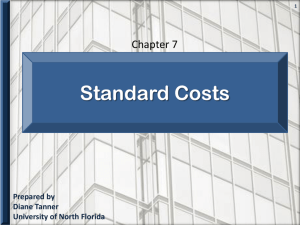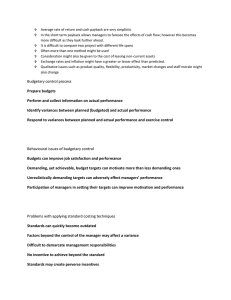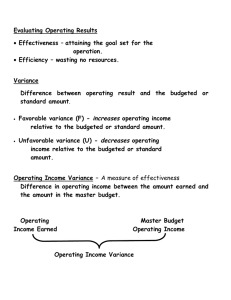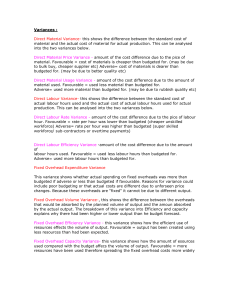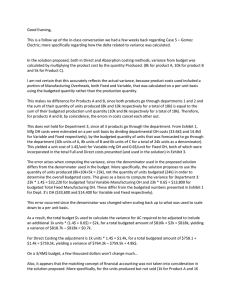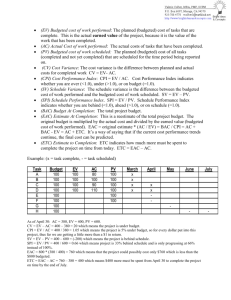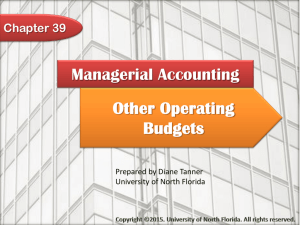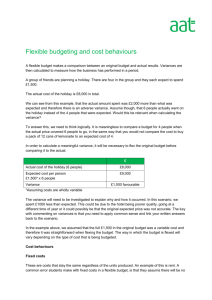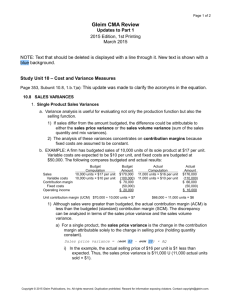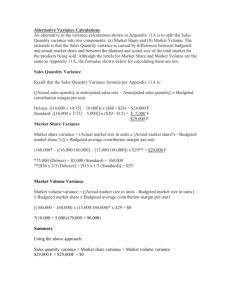Variances explanations
advertisement
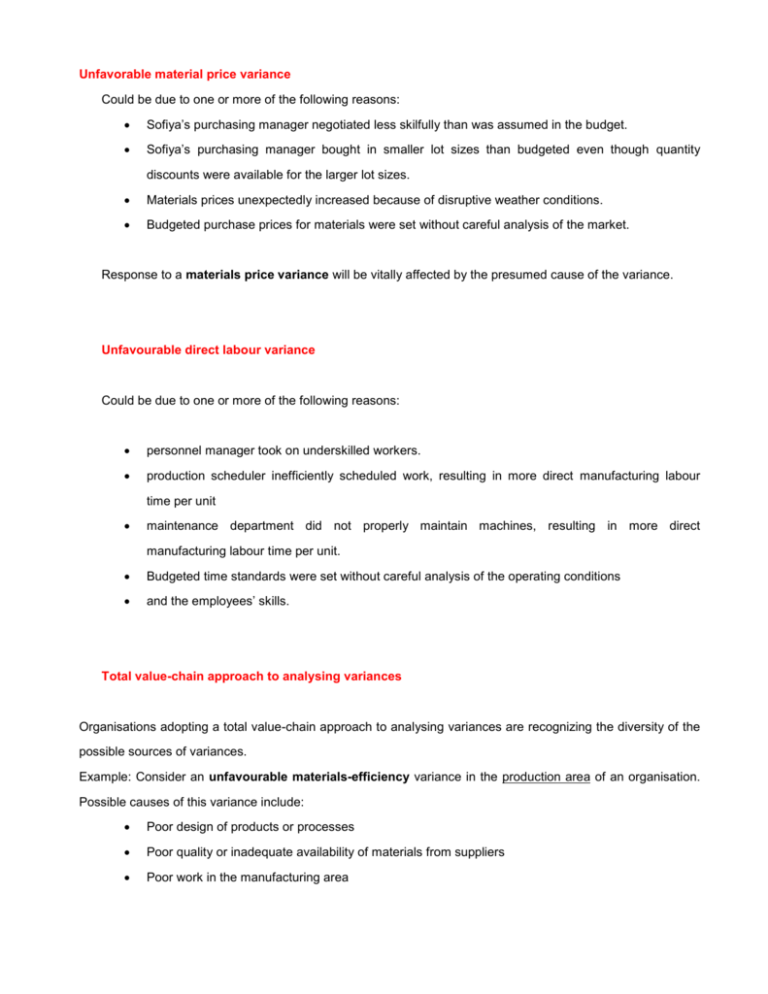
Unfavorable material price variance Could be due to one or more of the following reasons: Sofiya’s purchasing manager negotiated less skilfully than was assumed in the budget. Sofiya’s purchasing manager bought in smaller lot sizes than budgeted even though quantity discounts were available for the larger lot sizes. Materials prices unexpectedly increased because of disruptive weather conditions. Budgeted purchase prices for materials were set without careful analysis of the market. Response to a materials price variance will be vitally affected by the presumed cause of the variance. Unfavourable direct labour variance Could be due to one or more of the following reasons: personnel manager took on underskilled workers. production scheduler inefficiently scheduled work, resulting in more direct manufacturing labour time per unit maintenance department did not properly maintain machines, resulting in more direct manufacturing labour time per unit. Budgeted time standards were set without careful analysis of the operating conditions and the employees’ skills. Total value-chain approach to analysing variances Organisations adopting a total value-chain approach to analysing variances are recognizing the diversity of the possible sources of variances. Example: Consider an unfavourable materials-efficiency variance in the production area of an organisation. Possible causes of this variance include: Poor design of products or processes Poor quality or inadequate availability of materials from suppliers Poor work in the manufacturing area Inadequate training of the workforce Inappropriate assignment of labour or machines to specific jobs Congestion due to scheduling a large number of rush orders. Unfavourable variable-overhead efficiency variance Possible causes of the higher-than-budgeted machine-hour usage include the following: workers were less skilful in the use of machines than budgeted. production scheduler inefficiently scheduled jobs, resulting in higher-than budgeted machine usage. machines were not maintained in good operating condition. Budgeted machine time standards were set without careful analysis of the operating conditions. promised a distributor a rushed delivery, which resulted in higher machine usage than budgeted. Unfavorable variable-overhead spending variance Two main causes could explain a variable-overhead spending variance: Cause A. The actual prices of individual items included in variable overhead differ from their budgeted prices – for example: the purchase price of energy, indirect materials or indirect manufacturing labour was less than budgeted prices. Cause B. The actual usage of individual items included in variable overhead differsvfrom the budgeted usage – for example, the budgeted usage of energy, indirect materials or indirect manufacturing labour was less than the usage assumed in setting the budgeted variable manufacturing overhead rate per machine-hour. Cause A has implications for the purchasing area. Cause B has implications for the production area. Distinguishing between these two causes for a variable overhead spending variance requires detailed information about the budgeted prices and the budgeted quantities of the individual line items in the variable overhead cost pool.
